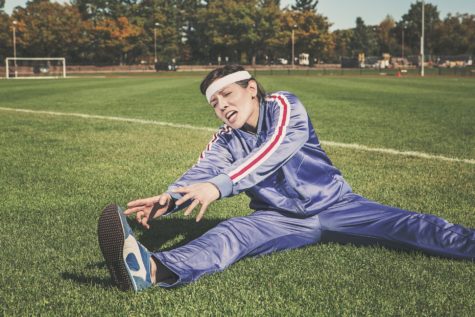STORRS, Conn. — If you don’t like pushing yourself too hard when you work out, good news for you: simply engaging in light- to moderate-level exercise combats the blues, a new study finds.
“We hope this research helps people realize the important public health message that simply going from doing no physical activity to performing some physical activity can improve their subjective well-being,” says Gregory Panza, a graduate student in the University of Connecticut’s Department of Kinesiology and the study’s lead author, in a university press release.

Panza and his team of researchers at UConn instructed 419 mid-aged adult participants in good health to wear accelerometers on their hips to measure physical activity over the course of four days, hoping to discover how different levels of exercise affected their subjective well-being.
Each participant also completed a series of other metrics, including questionnaires that measured their daily exercise habits, psychological well-being, level of depressive symptoms, pain severity, and the extent to which pain interfered with their daily activities.
For the purposes of their study, the researchers defined light physical activity to be any activity that didn’t result in a noticeable increase in breathing, heart rate, or sweating. They provided the example of leisurely walking in a mall.
Moderate physical activity did result in an increase in breathing, heart rate, and sweating, but one would still be able to carry on a conversation (e.g., walking a mile in 15-to-20 minutes).
Vigorous activity would comprise a 13-minute mile with high increases in breathing, heart rate, and sweating, and being unable to carry on a conversation.
The researchers found that those who led a sedentary lifestyle without doing much of any exercise were the least likely to have positive subjective well-being (i.e., be happy).
While it was clear that physical activity led to positive outcomes in general, different levels of intensity led to different benefits.
For example, light levels of exercise were found to lead to higher levels of psychological well-being and lower levels of depression, while moderate levels of exercise were linked to not only better psychological well-being, but lower levels of pain severity.
“What is even more promising for the physically inactive person is that they do not need to exercise vigorously to see these improvements,” says Panza. “Instead, our results indicate you will get the best ‘bang for your buck’ with light- or moderate-intensity physical activity.”
Panza emphasizes that “the ‘more is better’ mindset may not be true when it comes to physical activity intensity and subjective well-being. In fact, an ‘anything is better’ attitude may be more appropriate if your goal is a higher level of subjective well-being.”
Still, the study discredited a belief that has become increasingly popular: namely, that vigorous exercise decreases subjective well-being.
The authors note that the study only involved participants with typically upbeat beliefs about their personal well-being and were all physically active to some degree. A much longer study might be more beneficial to people with various ranges of life satisfaction and activeness.
The study’s findings were published in the Journal of Health Psychology.

Comments
Comments are closed.